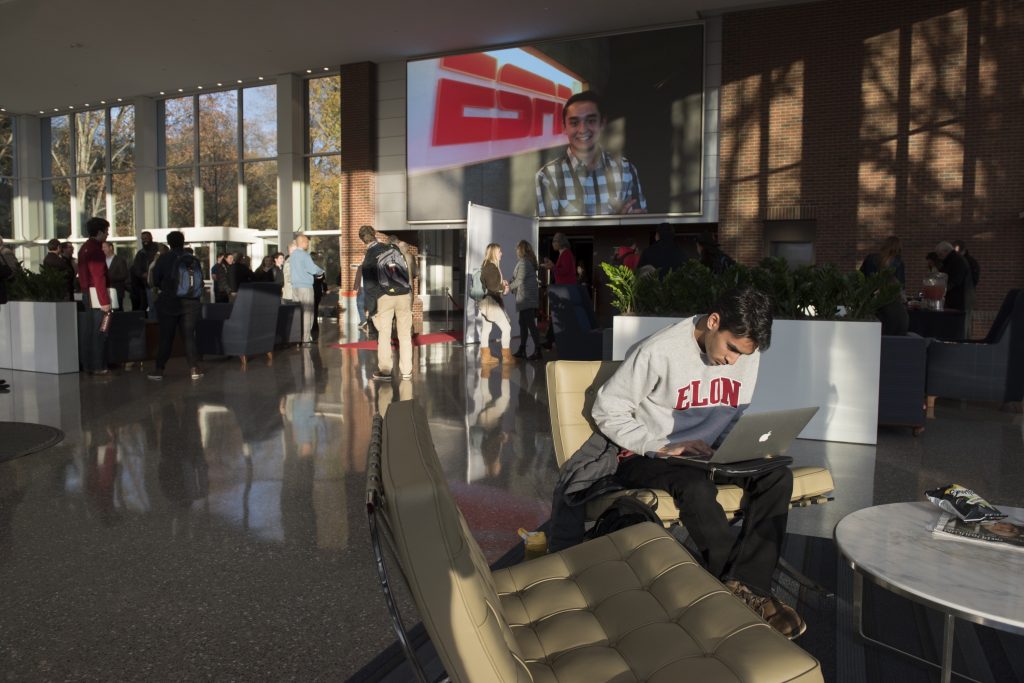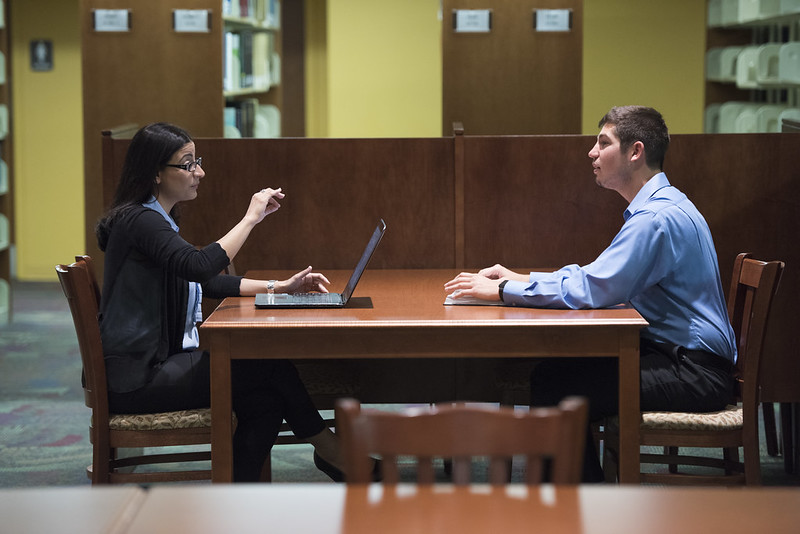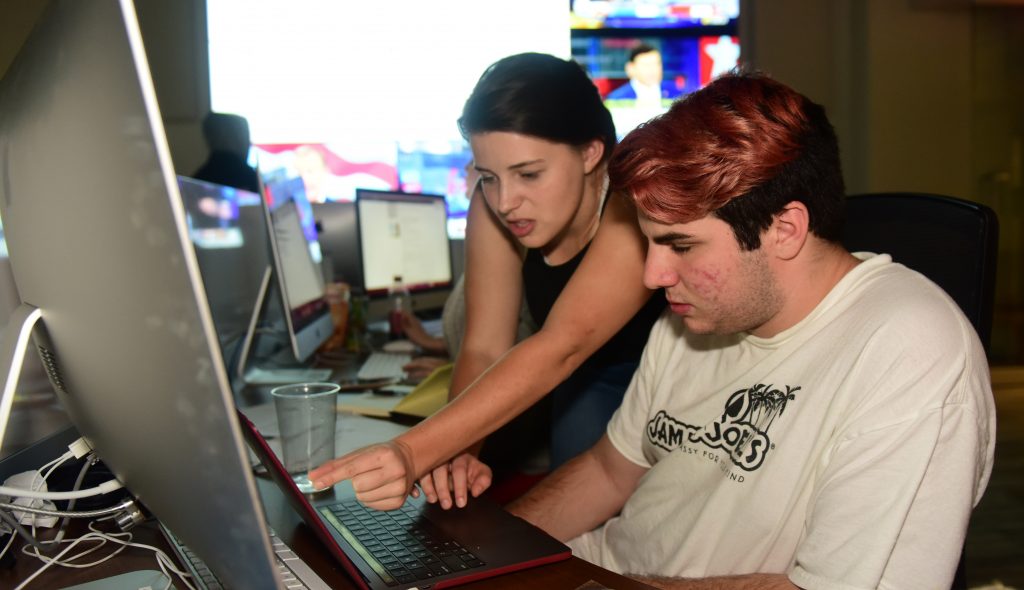Meeting the Learning Needs of Students with Disabilities
Meeting the Learning Needs of Students with Disabilities
Students’ disabilities may be visible or invisible. They may be diagnosed or undiagnosed. Students may know a lot about their disabilities and be aware of learning strategies that work for them, or they not know very much about them. They may be registered with Disability Resources for accommodations or they may not be. They may be using their accommodations or they may not be. They may have a single disability or they may have multiple disabilities.

Students may have disabilities that affect their ability to process information efficiently, such as learning disabilities, attention deficit hyperactivity disorder (ADHD), and autism spectrum disorder (ASD). They may have disabilities that affect their mental health, such as anxiety and depression, which can make it difficult to be academically engaged. They may have physical or sensory impairments that can limit their access to locations or materials or require special materials. They may have chronic health conditions, such as diabetes or Crohn’s disease, that may lead to class absences or require flexible due dates. With documentation, students with temporary medical conditions resulting from illness or accidents may also request accommodations.
And, while their disability may be a part of who they are, it is not the most interesting thing about them. They want you to see them as a whole person, with a full potential and a wide range of abilities and strengths. Neurodiverse students can thrive at Elon by building relationships, becoming self-advocates, and pursuing their personal and professional goals.
Collaborations between students & faculty
Research indicates that students with disabilities do best when their professors believe in their abilities, combine high expectations for student success with high levels of compassion, and have a social justice orientation.
Faculty may need to innovate in order to meet their students’ learning needs. Most accommodations, such as note taking and extended time on tests, are designed for traditional education environments. Experiential learning activities can be especially challenging for some students with disabilities because they may involve new physical locations, unfamiliar equipment, and require students to quickly absorb and apply instructional materials. Many field experiences also require students to collaborate with diverse others and often involve extended periods of discovery learning with purposely under-specified instructions.

Involve your students in figuring out how to meet their learning needs. Note that conversations about students’ specific educational needs should be confidential, and where possible you should avoid calling attention to any differential treatment.
- Go over the syllabus together to identify any activities or assignment that might include obstacles to their learning. You don’t need to know more about their specific disability but it can be helpful for the student to articulate their learning needs.
- Check in with your students as the semester unfolds. Are the accommodations working as needed? Are there aspects of the class or project that prevent them from doing their best work or that exclude them?
Providing access & accommodations
According to the Americans with Disabilities Act a university must provide physical access to all facilities and meaningful access to the educational experience. There must be a robust process in place for addressing student needs. A university may not discriminate on the basis of disability or require a student to disclose their disability.
Academic Accommodations and Accessibility is our key point of contact for meeting our students’ learning needs. They work with students to identify and manage any necessary accommodations.
Teaching and Learning Technologies can help you with Moodle settings that allow for extended time on tests and alternate due dates. They can also help you make any hand-outs or digital content more accessible for students with sensory impairments.
Students with disabilities may have different learning needs in online or remote environments, and thus a need for different accommodations. In addition to the strategies below, visit Meeting the learning needs of students with disabilities in online and remote environments.
Universal design for learning
Universal design is a proactive approach to inclusion first adopted in architecture. Recognizing that environments designed for able-bodied people often created obstacles for others, architects began to design ramps, automatic doors, and wider bathroom stalls to allow access for people with physical disabilities. The idea was soon applied in K-12 education for a wide range of disabilities and most recently to higher education and workplaces.
There are many approaches to universal design for learning (UDL). The Disabilities, Opportunities, Internetworking, and Technology Center at the University of Washington is a great source of information. Another helpful organization is CAST which provides a framework focused on providing multiple routes to student engagement, providing multiple modalities for representing new information, and alternative ways for students to demonstrate what they have learned.
Universal design requires instructors to think through curriculum, course planning, teaching, and assessment well ahead of their teaching. The best examples, therefore, involve faculty working in teams with instructional designers. However, many best practices in higher education make teaching and learning more inclusive and are feasible for individual faculty members.
Strategies to consider to increase accessibility
Transparency, or giving explicit emphasis to what we are doing and why we are doing it, can help increase students’ metacognitive awareness about learning. See Peer Review‘s “A Teaching Intervention that Increases Underserved College Students’ Success.”
Scaffolding can provide temporary support for students’ engagement in complex learning activities which lessen over time as their understanding grows. Scaffolds can bridge learning gaps, help students acquire discipline-specific reasoning strategies, enhance motivation, and move students toward more powerful, independent functioning.
When planning your class or other instructional activity
- Survey your students to identify any needs before your class begins. Acquire any needed equipment, e.g., large print thermometers for chemistry labs.
- Break large projects into smaller assignments with distributed due dates. Include annotated examples of past student work if possible.
During teaching & learning
- Arrange for one or more students to take notes that will be accessible to all students, e.g., through a shared Google Doc folder. Allow other students to take notes in whatever way they find most useful, or to record the class activities.
- Begin class periods with a review or overview and leave time at the end for a summary or consolidation activity.
- Use multiple modalities – visual and verbal information, handouts, videos, etc. Use captioned videos where possible. Contact TLT or use outside resources (links below) to enhance the readability of visuals you create.
- Provide concrete examples of abstract concepts. Talk through examples, showing how you think through disciplinary problems.
- Work intentionally to promote student engagement and productivity in collaborative or other active learning settings. Be sure students know the purpose of such activities and understand what they should be doing.
Assessing and providing feedback on student learning
- Allow students to demonstrate their understanding in a variety of ways: e.g., through papers, presentations, podcasts or videos. Encourage all students to stretch themselves to try new modalities.
- Try to avoid big, high stakes exams. Create short in-class assessments and untimed & supported assessments.
- Use Moodle to create individualized testing windows and assignment due dates.
- Provide explicit, supportive, and prompt feedback on student work.
Technology Resources
Below you’ll find a few links to resources using technology to facilitate accommodations and make course materials more accessible. Please contact Teaching and Learning Technology for more information and one-on-one help.
- Create individualized quiz times and assignment deadlines on Moodle.
- How to Extend a Submission Deadline in an Assignment for a Single Student
- How to Extend Test Time or Availability for a Quiz for a Student in Moodle
 Create visual media that can be read more easily both by humans and by screen readers (software that converts text to voice). These resources are from North Carolina State University.
Create visual media that can be read more easily both by humans and by screen readers (software that converts text to voice). These resources are from North Carolina State University.- Making Accessible Color Choices
- Understanding Document Structure
- Understanding Alternative Text
- Using Transcripts and Captions in Videos
Works Cited & Resources
Abes, E. S., & Wallace, M. M. (2018). “People see me, but they don’t see me”: An intersectional study of college students with physical disabilities. Journal of College Student Development, 59, 545-562.
Accessible Syllabus is a website dedicated to providing educators with the resources necessary to create classroom resources that plan for diverse student abilities.
Austin, K. S., & Peña, E. V. (2017). Exceptional faculty members who responsively teach students with autism spectrum disorders. Journal of Postsecondary Education and Disability, 30, 17-32.
Association on Higher Education and Disability.
Belch, H. A. (2011). Understanding the experiences of students with psychiatric disabilities: A foundation for creating conditions of support and success. New Directions for Student Services, 134, 73–94.
Evans, N. J., Broido, E. M., Brown, K. R., & Wilke, A. K. (2017). Disability in higher education: a social justice approach. Indianapolis, IN: Jossey-Bass.
Klein, G. D. (2009). Student disability and experiential education. Journal of Effective Teaching, 9, 11-37.
Thurber, A. & Bandy, J. (2018). Creating Accessible Learning Environments. Retrieved [1/30/2019] from http://cft.vanderbilt.edu/guides-sub-pages/creating-accessible-learning-environments/.
 I survey the students to assess their learning needs, asking whether they have any needs related to classroom space (e.g., need to move around, work in a quiet space away from others, to see everyone’s faces, etc.) or if they have any needs related to classroom materials (e.g., audio books, video captions, tight book budget, etc.).
I survey the students to assess their learning needs, asking whether they have any needs related to classroom space (e.g., need to move around, work in a quiet space away from others, to see everyone’s faces, etc.) or if they have any needs related to classroom materials (e.g., audio books, video captions, tight book budget, etc.).